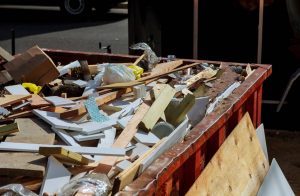Understanding Skip Bin Capacity
Managing waste effectively is crucial, whether you are undertaking a home renovation, clearing out your garage, or managing waste at a construction site. One of the most critical aspects of waste management is choosing the right skip bin size. Understanding skip bin capacity can save you time, money, and effort. This article will guide you through everything you need to know about skip bin sizes and how to choose the right one for your needs.
What is Skip Bin Capacity?
Skip bin capacity refers to the amount of waste a skip bin can hold. It is usually measured in cubic meters (m³), indicating the volume of waste that the bin can contain. Skip bins come in various sizes, typically ranging from 2m³ to 30m³, catering to different waste management needs.
Common Skip Bin Sizes
Here are some common skip bin sizes and their typical uses:
- 2m³ Skip Bin: Ideal for small clean-up jobs, garden waste, and minor home renovations.
- 4m³ Skip Bin: Suitable for small home projects, such as kitchen or bathroom renovations.
- 6m³ Skip Bin: Perfect for medium-sized renovation projects, garden clear-outs, and small construction sites.
- 8m³ Skip Bin: Great for larger home renovations, commercial clean-ups, and medium construction projects.
- 10m³ Skip Bin: Best for large construction sites, major home renovations, and commercial waste disposal.
- 15m³ and Above: Suitable for industrial projects, large-scale demolitions, and significant construction works.
Factors to Consider When Choosing a Skip Bin Size
Choosing the right skip bin size depends on several factors. Here are some key considerations:
Type of Waste
The type of waste you need to dispose of will significantly influence your choice. For example, green waste, household waste, construction debris, and hazardous materials all have different requirements and limitations.
Volume of Waste
Estimate the volume of waste you need to dispose of. It’s always better to choose a slightly larger skip bin to ensure you have enough space, rather than having to hire an additional bin.
Project Duration
The length of your project also matters. For long-term projects, you might need a larger skip bin or multiple bins to manage the accumulating waste efficiently.
How to Estimate Skip Bin Capacity
Estimating skip bin capacity can be tricky, but here are some tips to help you:
Measure the Waste
If possible, measure the dimensions of the waste pile (length, width, and height) to calculate the volume. Use the formula for volume (length × width × height) to get an estimate in cubic meters.
Consider Waste Compaction
Remember that some waste can be compacted to take up less space. However, avoid overfilling the skip bin, as it can lead to additional charges or safety hazards.
Seek Professional Advice
If you are unsure, consult with a skip bin hire company. They have experience in estimating waste volumes and can recommend the right bin size for your needs.
Tips for Efficient Waste Management
Effective waste management goes beyond choosing the right skip bin size. Here are some tips to help you manage waste more efficiently:
Separate Waste Types
Sort your waste into categories such as recyclables, green waste, hazardous materials, and general waste. This makes disposal easier and more environmentally friendly.
Break Down Large Items
Disassemble large items like furniture to save space in the skip bin. This allows you to fit more waste into the bin and reduces the need for multiple bins.

Understanding Skip Bin Capacity
Fill the Bin Evenly
Distribute the waste evenly in the skip bin to maximize space utilization. Avoid creating a pile in the center, which can reduce the overall capacity.
Legal Considerations for Skip Bin Use
Using skip bins also involves adhering to certain legal guidelines and regulations. Here are some important legal aspects to consider:
Permits and Licenses
Depending on your location and the placement of the skip bin, you may need a permit or license from the local council. Check with your skip bin hire company or local authorities for the requirements.
Prohibited Items
Certain items are not allowed in skip bins, such as hazardous materials, asbestos, batteries, and chemicals. Make sure to follow the guidelines provided by your skip bin hire company.
Overfilling the Bin
Overfilling skip bins can lead to safety hazards and additional charges. Ensure the waste level does not exceed the bin’s rim.
Conclusion
Understanding skip bin capacity is essential for effective waste management. By considering factors like the type and volume of waste, project duration, and legal requirements, you can choose the right skip bin size for your needs. Additionally, following efficient waste management practices can save you time and money while ensuring environmental sustainability.
For more information or to hire a skip bin, contact your local skip bin provider and get professional advice tailored to your specific needs.
